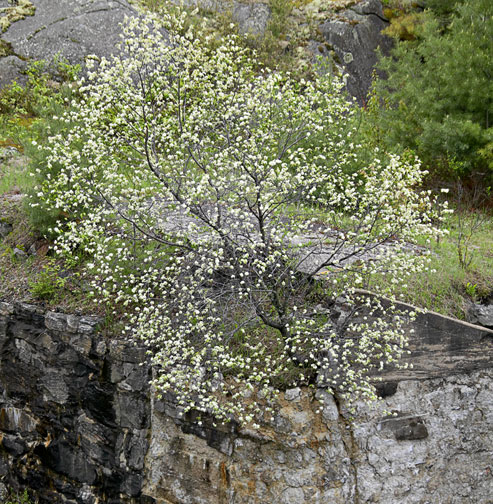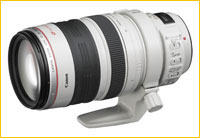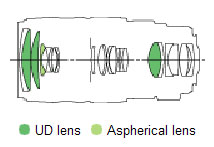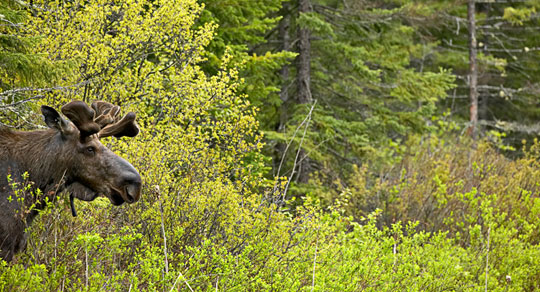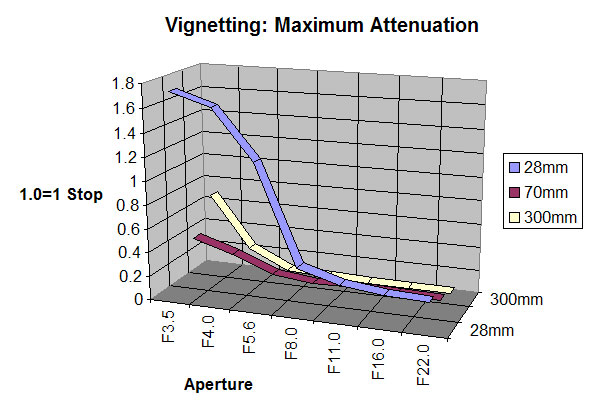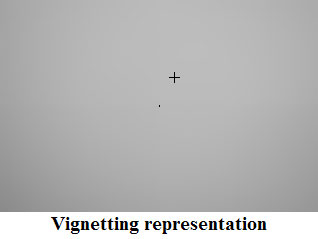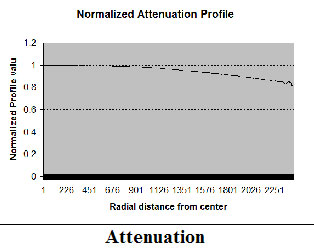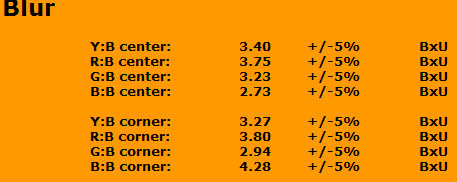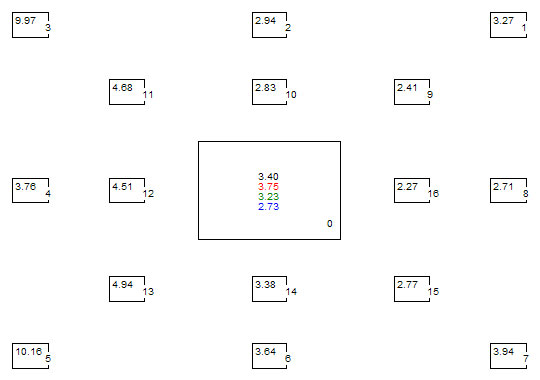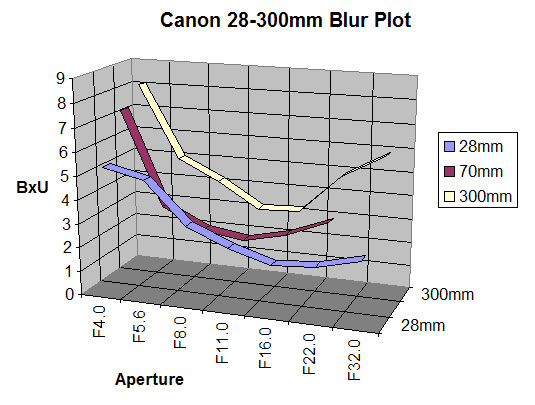An Optical Analysis Using

__________________________________________________________
In late January 2004 Canon announced two new zoom lenses, the28 – 300mm f3.5-5.6L ISand70 – 300mm f4.5-5.6 DO IS. Neither of these lenses is inexpensive. The DO lens sells for about U.S. $1,500 while the 28-300mm lens has a street price of approximately $2,400. (These are current — May, 2004 — mailorder prices).
Both lenses started shipping in late May and I had an opportunity to use them on location photographing moose and other wildlife as well as landscape in Algonquin Park in northern Ontario. These lenses have also been subject to a bench test usingDxO Analyzer. This is a review of the28 – 300mm f3.5-5.6L IS. My review of the70 – 300mm f4.5-5.6 DO ISwill appear separately.
Blossoms — Algonquin Park, Ontario. May, 2004
Canon 1Ds with Canon 28-300mm f/5.6L IS lens.
__________________________________________________________
About Canon Lens Nomenclature
Whenever I publish a Canon lens test report I am asked the meaning of all the letters and numbers in the lens’ name. Here is a brief guide:
EF— This refers to Canon’s electronic lens mount, used in all Canon camera since 1987. The previous mechanical lens mount carried the letters FD.
28 – 70mm— this is the range of focal lengths covered by the lens, 28mm at the wide end and 70mm at the long end (for example).
f/3.5-5.6— this is the range of the maximum aperture of the lens, in this example f/3.5 at the lens’ wide angle setting, changing to f/5.6 at its longest focal length. A prime or zoom lens with a fixed maximum aperture will have just a single F stop shown in the name.
L— Canon’s designation for their top-of-the-line lenses is the letter L. These lenses are the best that the company knows how to make at any given focal length and aperture, and of course for a given price (which in the case of L series lenses is usually high).
DO— stands for Diffractive Optic and is used on Canon lenses which utilize a unique diffraction grating to control chromatic aberration and reduce lens size and weight.
IS— indicates that the lens utilizes Image Stabilization, which reduces vibration as much as 3 stops, allowing hand holding of long lenses at much lower shutter speeds than would otherwise be possible.
USM— stands for Ultrasonic Motor, a technology that uses sound waves to position the lens elements when focusing. This reduces size, weight and power consumption of the autofocus mechanism as well as increasing speed and allowing for manual override.
An Observation on Maximum Aperture
During most of the 20th Century photographers wanted one thing above all else — faster lenses. We fought for light, spendt hundreds more for an f/1.4 lens over an f/1.8. A 300mm telephoto that was faster than f/5.6 was to be coveted. Also, the quality of zoom lenses during the ’70s and ’80’s when they started to become popular wasn’t that great, and serious photographers only wanted primes. Fast ones at that.
Well, that was then and this is now. Because of advances in computer-assisted lens design and also the use of exotic glass elements, zooms lenses have become very good indeed. The best ones arealmostas good as the best primes, and much more versatile. But they are relatively slow. In fact few if any manufacturers are even producing new prime lens designs anymore, and some are even being discontinued due to slow sales. (Get ’em while you still can). New lenses like these two high-end zooms are indicative of how manufacturers are no longer fighting for speed. People would much rather have smaller, though slower lenses, not faster ones.
Why? Because digital SLRs are so much less noisy (grainy) than film was. Shooting at ISO 400 is now consideredeveryday, and if a photographer sees almost any noise at this speed they get upset. Even ISO 1200 is considered usable. This was certainly not the case with colour transparency film (though colour neg was a bit better). In any event, no one thinks twice now about shooting at ISO 400, and so fast lenses simply aren’t as necessary for the typical photographer as they once were.
One area that has suffered though is in viewfinder brightness. Reduced frame DSLRs have dimmer viewfinders than film cameras or full-frame digital SLRs like the 1Ds, and when you combine this with a slow maximum aperture zoom the viewing can get dim indeed. Such is progress.
__________________________________________________________
Canon EF 28 – 300mm f3.5-5.6L IS USM
This is a large and heavy lens at over 1.6Kg. It covers a 12X focal length range, from medium wide angle to telephoto. The lens which is finished in Canon’s off-white coloured metal and has rubberized zoom and focus controls. It comes complete with a removable tripod collar, lens shade and carrying case. The closest focusing distance is a very reasonable .7 meters at all focal lengths, and it takes 77mm filters.
There are four mechanical switches on the left side of the lens for focus range limiting, AF/MF, Stabilization On and Off, and Stabilization Mode. The rear lens mount features a rubber gasket for weather sealing (as do most Canon high-end lenses over the past couple of years).
This lens utilizes a push-pull zoom design. There is a friction setting collar just behind the manual focusing ring, but I usually find that I’ve set it either too loose or too tightly. This entire design is the same as last seen on theCanon 100-400mm f/5.6L ISzoom of a few years ago. I didn’t care for it then, and I don’t care for it now.
This bench test of theCanon 28 – 300mm f3.5-5.6L ISlens was conducted usingDxO Analyzer. If you are not familiar with this optical testing system please readthis tutorial. Without being familiar with how the tests are conducted, and how to read them, there’s not much point in proceeding.
The purpose of this test report is to support the empirical findings of my field test of this system. Though the tests on this page are interesting and informative (as well as accurate and repeatable), they really only tell us about selected aspects of a camera or lens’ capabilities.
In The Field
After a few days shooting in the field and then reviewing files on-screen as well as prints I came to some conclusions, not all of them positive. The lens certainly is capable of producing high quality images. Not as high-resolution as those from theCanon 70-200mm f/2.8L IS, and also not to Canon’s prime lenses within its range. But, given that this is a 12X zoom covering full-frame 35mm, the compromises may be worthwhile for many photographers.
My real concerns with this lens are twofold and relate to its push-pull design. Firstly, if the zoom friction is set so that the focal length can be set smoothly and precisely then the position sometimes creeps if the lens is tilted up or down. If it’s set so that it doesn’t creep, then I find that it doesn’t slide smoothly enough for precise positioning without fiddling.
My second objection is that the push-pull action tends to act as a bellows, moving air around aggressively inside the mirror housing, potentially stirring up dust. I have found over the past few years when using the 100-400mm zoom with digital bodies, including the D30, D60, 10D and 1Ds, that I experience noticeably more dust on the sensor after using a lens with this design than with zooms that feature ring-based zooming.
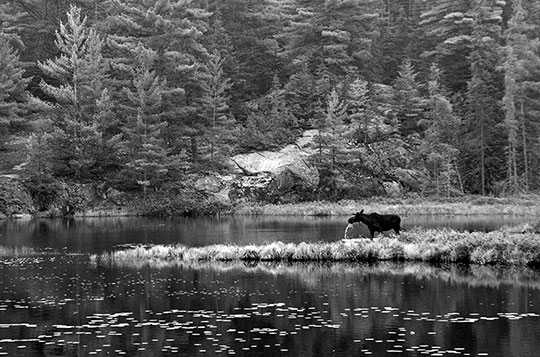
Drooling Moose — Algonquin Park, Ontario. May, 2004
Canon 10D with Canon 28-300mm f/5.6L IS lens.
In the field the lens handled well, though I really wonder at the advantage (for my uses at least) of a lens with this wide a range. It really isn’t that often that one needs such a wide range of focal lengths at the same time. A wide zoom and a separate tele zoom seem to make more sense for my purposes. When this great a range of focal lengths are needed the size and weight can be considerations. At least with a two or three lens solution the ones not being used can be carried in a shoulder bag. Here you are forced to carry and shoot with the full and considerable weight and bulk of this lens all the time. Because of its weight and focal length (at the long end at least), this is also likely to be a tripod mounted lens much of the time for many photographers.
I also found the supplied lens shade to not be very effective, especially at the long end of the zoom range. An effective shade for a 200-300mm lens needs to be quite long to reduce flare, and because the supplied shade needs to avoid vignetting at the 28mm focal length it is essentially useless much of the time. The lens is also not compatible with Canon’s 1.4X or 2X Extenders.
Moosehead— Algonquin Park, Ontario. May, 2004
Canon 1Ds with Canon 28-300mm f/5.6L IS lens.
About The Tests
As you can see from theDxO Tutorialthere are a large number of charts and text graphs produced for each of the tests —Distortion & Chromatic Aberration,Vignetting, andBlur. (Noise is excluded here because it is only relevant to testing sensors). A more comprehensive test would have to be done at all available apertures, all available ISO speeds, and at a large cross-section of focal lengths (in the case of zoom lenses). This would not only take an inordinately large amount of time to conduct, but would take up far to much space here and likely not be of much interest.
In the case of zoom lenses this test is done at a mid-position in the lens’ focal length range. Where appropriate I also post data for other F stops, ISO ratings and in the case of zooms a selection of focal length, including the widest and longest. In my comments to each section I draw attention to extremes of performance, such as maximum vignetting, greatest and least noise, etc.
To jump directly to the definition and tutorial for a specific test click on the DC, V or B logos.
Distortion and Chromatic Aberration
Canon EF 28 – 300mm f3.5-5.6L IS USM @ IS O 100.
Focal Length = 70mm
Camera used: Canon 1Ds

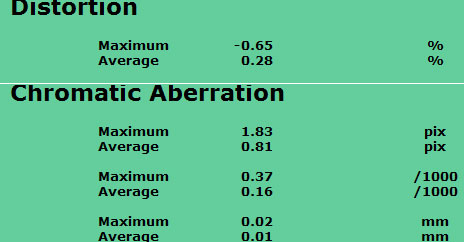
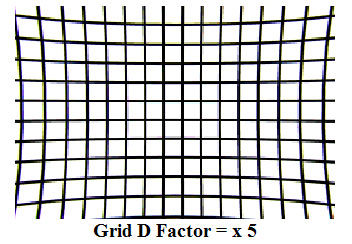
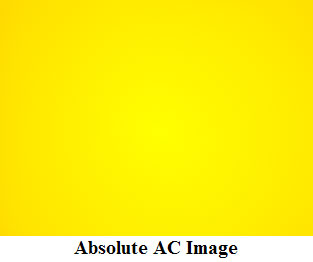
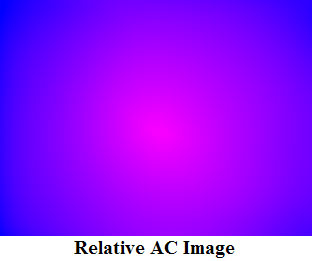
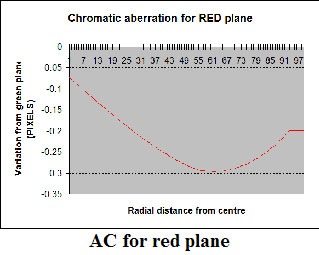
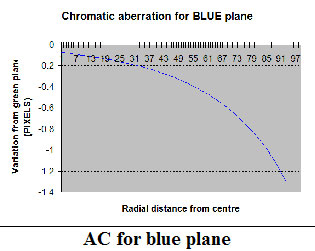
@ 28mm
@ 300mm
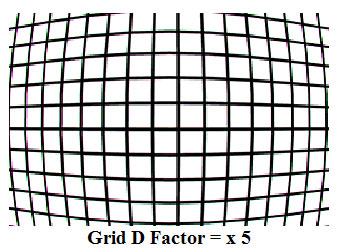
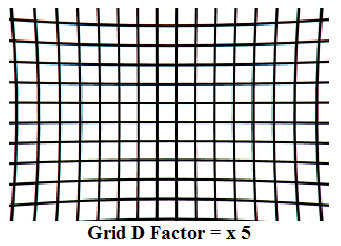
Observation
Chromatic aberration measures higher at all focal lengths than I expected from a lens in the price range. Distortion at medium and telephoto settings was moderate, but was quite strong at the wide end. It ranges from strong barrel distortion at the wide end to modest pincushion distortion at the long end of its focal length range.
Vignetting
Observation
Vignetting with this lens is reasonable at both 70mm and 300mm focal lengths. At 28mm it is surprisingly high until the lens is stopped down to at least f/8. This is not a lens that I would want to use at its wide angle settings with the aperture wide open.
Blur
NB: This measurement made at F/8 to avoid maximum aperture
28mm 70mm 300mm F/4 4.9 – – F/5.6 3.2 7.33 8.1 F/8 2.5 3.4 5 F/11 2 2.5 4.1 F/16 2.1 2.3 3.1 F/22 2.6 2.7 4.9 F/32 – 3.4 5.9
Observation
This is a decent performing lens when it comes to sharpness, but not a great lens. The graph above shows that stopping down a couple of stops from wide open will strongly improve performance (as it does with many lenses), but at smaller apertures diffraction effects start to kill performance. F/11 and f/16 are therefore the optimum working apertures. This serves as a good example of thedarksideof using slow maximum aperture lenses. Since almost all except the very finest telephoto lenses need to be stopped down to reach their sweet spot, using a lens with a slow maximum aperture to begin with means working at small apertures, and therefore needing to use higher ISO settings. As is the case in almost every aspect of life —there’s no free lunch.
The Bottom Line
It’s big, it’s heavy and it’s expensive. All aspects of performance at the wide end of the lens’ focal range are modest, though it improves to quite decent levels at mid and long focal lengths. I am certain that there are photographers who will find that this lens’ performance meets their needs, and for whom its physical and financial challenges are acceptable. But for many photographers two separate high quality zoom lens may well prove to be a preferable solution.
__________________________________________________________
You May Also Enjoy...
Purple Blacks
This may turn out to be academic for just about everyone except those that have bought a Leica M8 or who are thinking of buying
Arch Angel Falls
A Touch of Gold© Miles HeckerCLICK ABOVE IMAGE TO SEE GOOGLE MAP LOCATION SEASONS The Left Fork of North Creek is home to The Subway.
